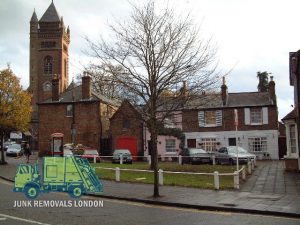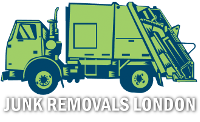The London Borough of Ealing is one of the 32 administrative divisions (boroughs) of the British capital. The 33rd is City of London itself, which isn’t considered a borough, but has a special administrative status of its own. Covering portions of both West and North London, Ealing borough happens to be the 11th largest borough in terms of size, and the 3rd largest population-wise, in Greater London. At the moment, the borough’s governance and headquarters is located in Ealing Broadway – one of the larger areas in the borough. Ealing forms part of so called Outer London, its local authority is Ealing London Borough Council (ELBC). Besides Ealing Broadway itself, the other major commercial and metropolitan areas of the borough are Acton, Southall and Greenford. There are a total of 19 districts forming the Borough of Ealing, some of them are listed below.
Location, Formation & Key Features
Ealing shares a border with five other London Boroughs – Harrow, Brent, Hillingdon, Hounslow, and Hammersmith & Fulham. Like many of the other boroughs, Ealing was also formed in 1965 through the Local Government Act. Administratively, the borough incorporated the former Municipal Boroughs of Ealing, Acton and Southall. Ealing is considered one of the greener and leafier boroughs of the British capital, with more than 330 hectares of land within the borough designated as Metropolitan Green Belt. Two of London’s specially designed and developed garden suburbs, those of Bedford Park and Brentham are within Ealing borough. At the moment, there are four divisions/stations of London’s Fire Brigade across the borough.
Some of the areas forming the borough of Ealing
- Bedford Park W4 –
 the suburb is actually split between Ealing and Hounslow borough. Adequately described and considered as the world’s first proper Garden Suburb. Bedford Park was specially designed to resemble the best examples of garden suburbs from around the world.
the suburb is actually split between Ealing and Hounslow borough. Adequately described and considered as the world’s first proper Garden Suburb. Bedford Park was specially designed to resemble the best examples of garden suburbs from around the world. - Northolt UB5 – originating from a Saxon village, Northolt has been thoroughly recorded in the Doomsday Book (1086). The modern settlement is a residential suburb crossed by the Grand Union Canal and the A40 highway. Until the Victorian era, Northolt remained rural under control of the Northolt Manor.
- West Ealing W13– only a walking distance away from Ealing Broadway, West Ealing formed later on, about hundred or so years ago. For a brief period in the 1200s there was a hamlet called West Ealing but the name was soon abolished until it reappeared in the early 1900s.
- Greenford UB6– this is one of the larger suburbs within the borough, originating from an ancient parish of Middlesex. There are a number of local landmarks – Horsenden Hill (a lookout point standing 280 feet above sea level), also the 14th century Holy Cross Church and Betham Manor House built sometime around 1780.
- Perivale UB6– also one of the better known areas within the borough, Perivale has been and still is home to many notable people. Prior to the urban expansion of the 1930s, most of the land there was occupied by hay fields which produced hay for the horses of Victorian London. Perivale has been featured and mentioned on more than one occasion in films and literature.
Borough of Ealing – quick facts
At the moment, there are ninety one public schools and nurseries across the borough. There are also ten or so privately funded schools in Ealing Borough, including the Japanese International School in Acton, and the Saudi funded King Fahd Academy.  Ealing is a borough of mixed ethnicity, with about 50% of all people being white Cristian, followed by 30% of Asian & Muslim, there is also approximately 15% Afro-Caribbean population. By far however, the largest community in Ealing is the Irish one. Irish people have migrated to Ealing for many decades now, which is evident by the cultural mark left by these peoples (Irish pubs, festivals, regular Gaelic games staging etc.) Following the Irish, is the relatively large British-Polish community which congregated in Ealing during the WWII years. During that time, polish refugees displaced by the Nazis came to London to try and rebuilt their lives. Many skilled Polish workers got jobs with light engineering companies which operated in Ealing fulfilling government contracts, producing for the war effort. The Borough of Ealing is twinned with three towns on mainland Europe: Bielany in Poland, Marcq-en-Barœul in France, and the Steinfurt district in Germany.
Ealing is a borough of mixed ethnicity, with about 50% of all people being white Cristian, followed by 30% of Asian & Muslim, there is also approximately 15% Afro-Caribbean population. By far however, the largest community in Ealing is the Irish one. Irish people have migrated to Ealing for many decades now, which is evident by the cultural mark left by these peoples (Irish pubs, festivals, regular Gaelic games staging etc.) Following the Irish, is the relatively large British-Polish community which congregated in Ealing during the WWII years. During that time, polish refugees displaced by the Nazis came to London to try and rebuilt their lives. Many skilled Polish workers got jobs with light engineering companies which operated in Ealing fulfilling government contracts, producing for the war effort. The Borough of Ealing is twinned with three towns on mainland Europe: Bielany in Poland, Marcq-en-Barœul in France, and the Steinfurt district in Germany.
